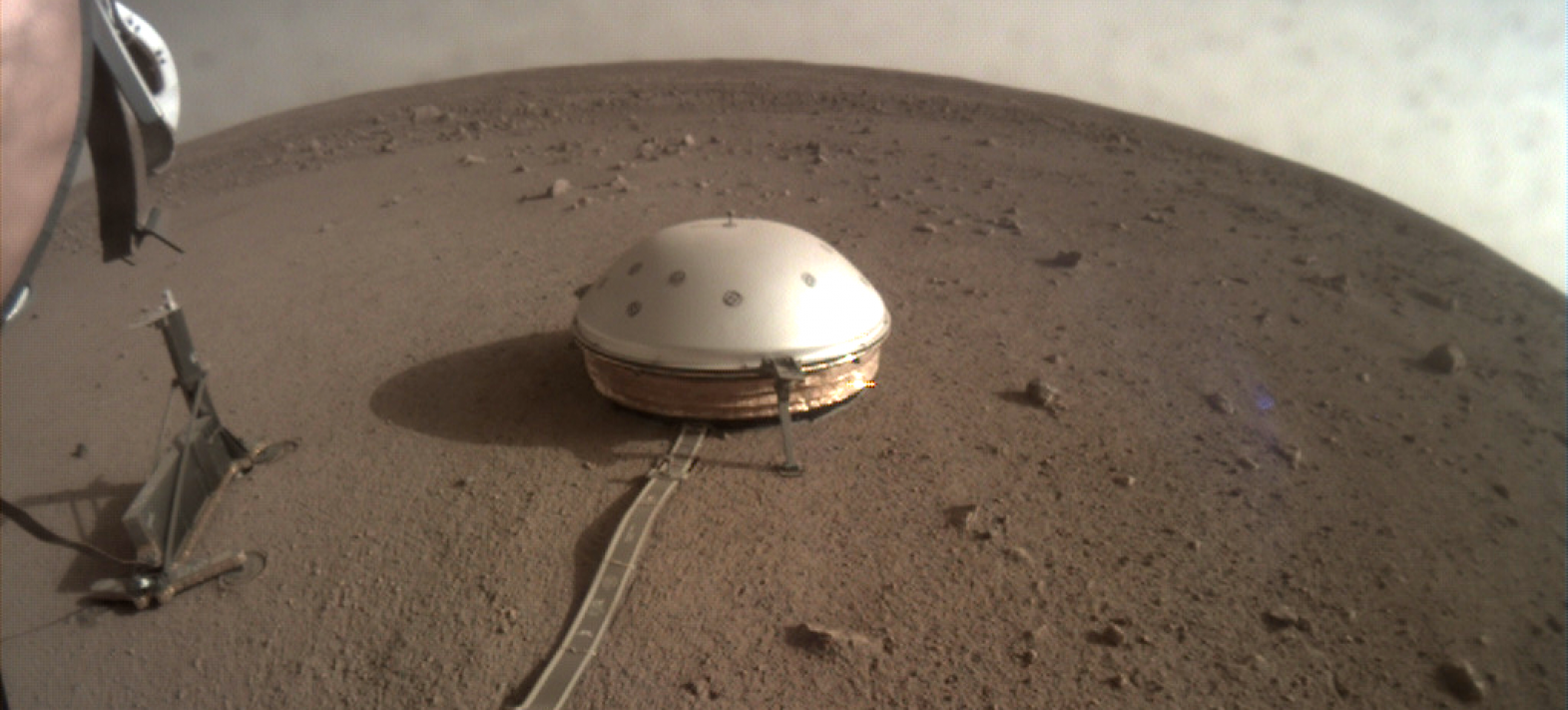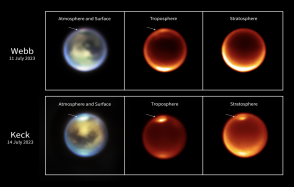Press release dated 24/05/19
The first data from the SEIS seismometer on NASA’s InSight mission will be made available to the scientific community and the general public from Friday May 24th, thanks in particular to the IPGP, CNES and CNRS.
The SEIS seismometer continuously records the tiniest movements on Mars. These signals are transmitted several times a day to the mission control centre at NASA’s Jet Propulsion Laboratory (JPL) in Pasadena, California. The seismic data is then automatically sent to SISMOC, the CNES mission centre in Toulouse, which transforms it into the internationally used format for seismic data (SEED). Finally, they are automatically collected by the Mars SEIS Data Service (MSDS), a department of the IPGP Data Centre, where they are documented and checked before being archived and made available to the InSight scientific team via the SEIS Data Portal. The MSDS is also responsible for making the data available to the public via three international ‘distributors’: the Planetary Data System, the Incorporated Research Institutions for Seismology and the IPGP Data Centre. From 9pm Paris time on Friday May 14th, these three institutions will be making public the data recorded 3 months earlier on the Martian surface.
Even though we are using a data format that is well known to seismologists, the SEIS data has been formatted in a very different and more complex way than data from terrestrial sensors,” explains Constanza Pardo, CNRS research engineer and head of the Mars SEIS Data Service at the IPGP. We had to make sure that all the related information was properly backed up”. The SEIS instrument produces data for each of its 6 sensors, together with the temperature and voltage data that are measured continuously. All this data can now be used by the entire scientific community to gain a better understanding of the formation and structure of Mars.
Schools taking part in the “Sismo à l’école” programme, coordinated by the GeoAzur laboratory (CNRS/Université de la Côte d’Azur/IRD) in Nice, will also receive the Martian data and will be able to incorporate it into their teaching experience. As part of this educational programme for the InSight mission, secondary school pupils had already prepared to access these data by taking part in the InSight blind test project coordinated by ETH Zurich, one of the IPGP’s partners for the Mars mission. The students learnt how to use the data visualisation tools and how to search for events in the data. From Friday, it will be the Martian recordings that will be broadcast across this network of around a hundred schools, with, for the pupils, no doubt the same surprises as those experienced by the mission’s seismologists. These data will now make it possible to follow the seismic activity of another terrestrial planet from the classroom on a daily basis, but with a slight delay.
The IPGP Data Centre, an expert in data distribution :
The main mission of the IPGP Data Centre (CDIPGP) is to manage the IPGP’s geophysical data and make it available to the scientific community. It is responsible for the archiving of this data, its long-term storage (reinforced protection) and its distribution in standard formats and interfaces. It is also responsible for transferring data to external services such as the French Seismological and Geodetic Network (RESIF) and the International Federation of Digital Seismograph Networks (FDSN).
The CDIPGP manages data from five permanent observatory networks: the international seismological network GEOSCOPE; the volcanological and seismological networks of Guadeloupe and Martinique; the volcanological network of Réunion (Piton de la Fournaise); and the French seismological network of the Antilles (West Indies).
The CDIPGP also manages data from the SEIS instrument on the InSight Mars mission, and as part of this, the data centre has developed two new services: the Mars SEIS Data Service (MSDS) and the SEIS Data Portal (SDP).
CNES is the prime contractor for SEIS, while IPGP (Institut de Physique du Globe de Paris, CNRS, Université de Paris) is responsible for the scientific aspects. CNES finances the French contributions, coordinates the international consortium (*) and has been responsible for the integration, testing and delivery of the complete instrument to NASA. CNES is also responsible for the ground infrastructure set up and operates the instrument from the FOCSE-SISMOC mission centre in Toulouse. IPGP designed the VBB (Very Broad Band) sensors and tested them before delivery to CNES. Several CNRS laboratories, including the LMD (CNRS/ENS Paris/Ecole Polytechnique/Sorbonne University), the LPG in Nantes (CNRS/Université de Nantes/Université d’Angers) and ISAE-SUPAERO, are also involved in analysing data from the InSight mission.
(*) In collaboration with SODERN for the production of the VBBs, JPL, the Swiss Federal Institute of Technology Zurich (ETHZ, Switzerland), the Max Planck Institute for Solar System Research (MPS, Göttingen, Germany), Imperial College London and Oxford University have supplied the SEIS subsystems and are participating in the scientific exploitation of SEIS.
Find out more about SEIS:
Bibliography:
Websites:
Access to SEIS data (from 24/05/19 at 21h):









